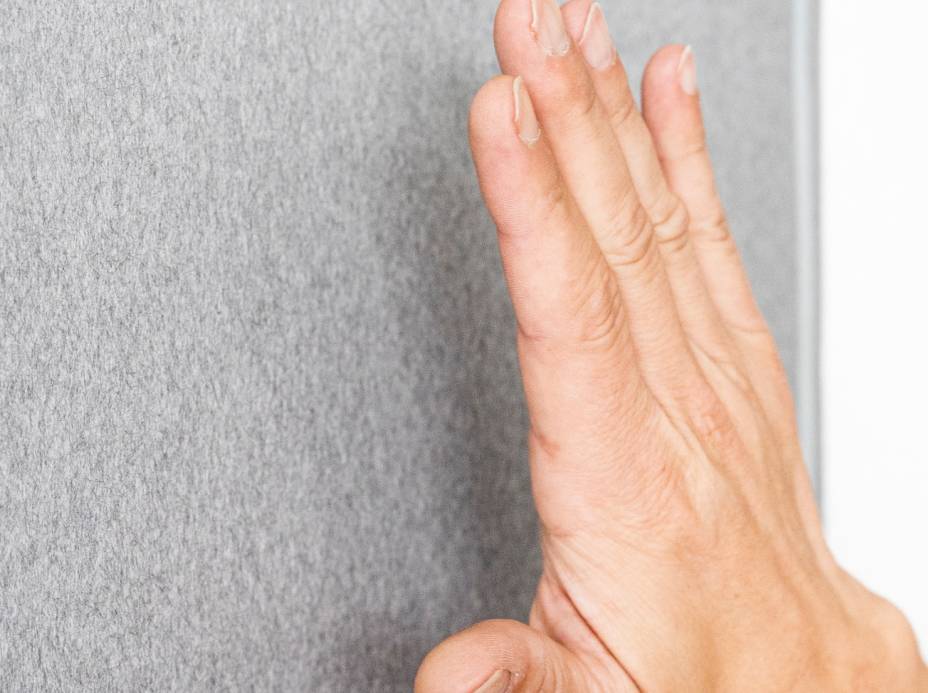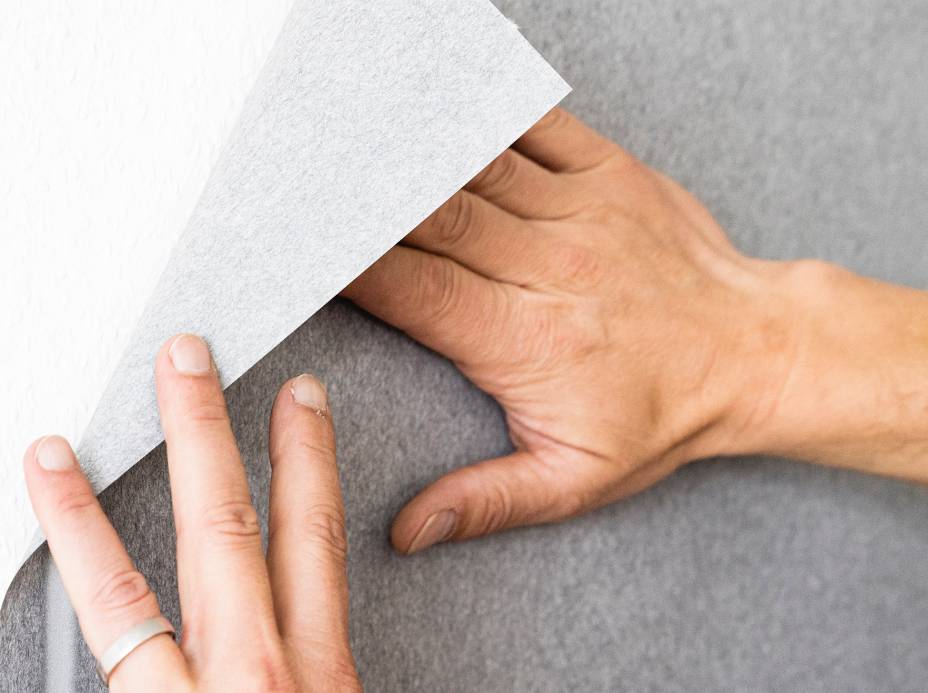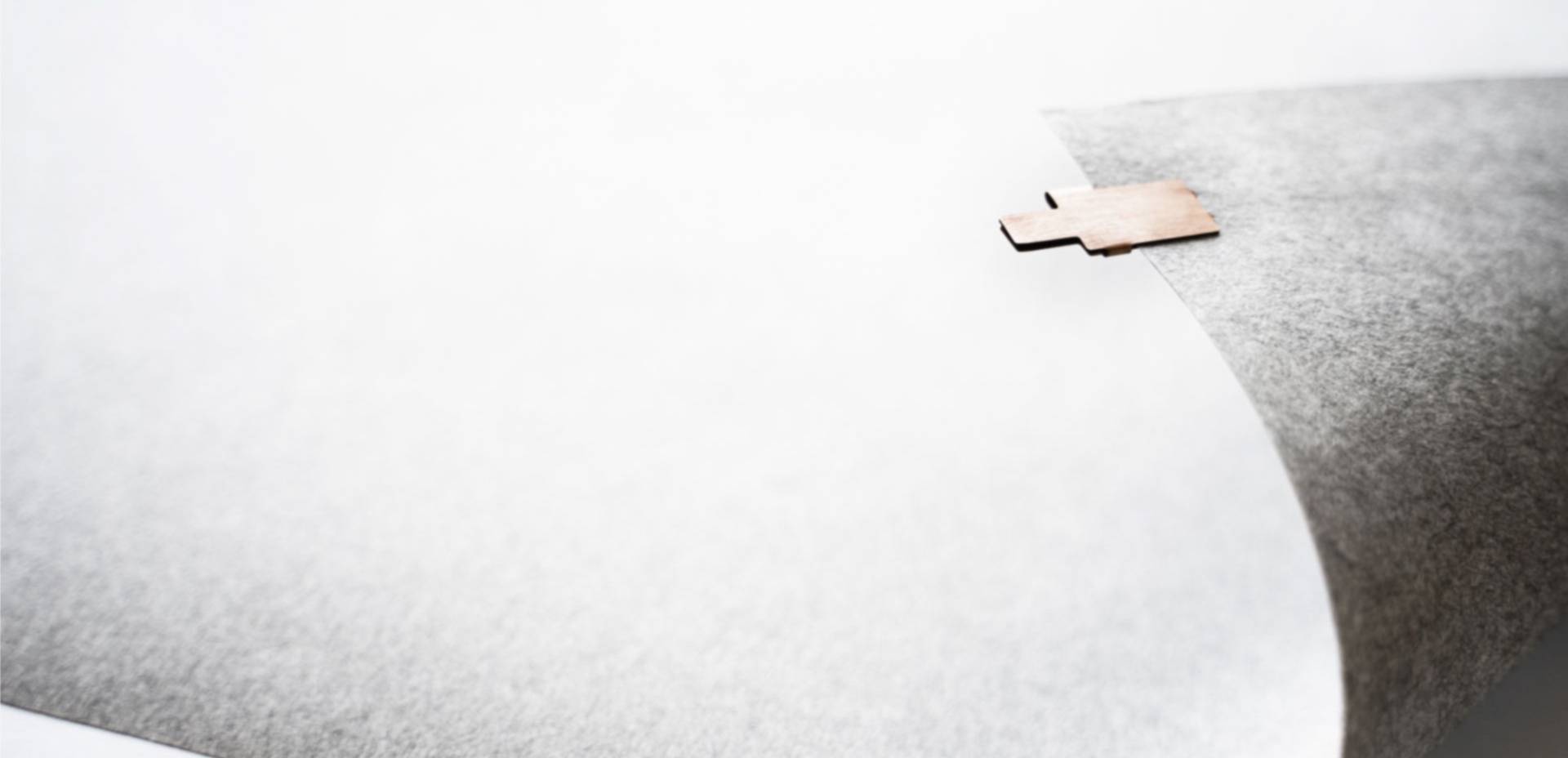- 0,20 mm Natural fibres and recycled carbon fibres. Nothing else.
- 24 % energy savings compared to conventional heating systems. Thus pioneering for the energy turnaround.
- 99 % Recycled material

KOHPA®therm
With a material thickness of only 0.20 mm, the lightest and thinnest panel heating available on the market consists of a mixture of natural fibre and recycled carbon fibres. In addition to its good formability, the patented material is breathable, dimensionally stable and easy to process. KOHPA® therm is characterised by the specially developed contact strips (contacting). Voltage in the low-voltage range (24-42 V) can be applied to the contacts by qualified personnel. KOHPA® therm may only be used as a surface heating in combination with the original contacting. With energy savings of up to 24 % compared to conventional heating systems, this product is groundbreaking for the energy turnaround.
Possible applications of panel heating
-
Table top heating, heating plates, cabinet heating
-
Wing and rotor blade heaters (icing)
-
Electrostatic discharge
-
Wall, floor and ceiling heating, mould control
-
Caravan and camper heaters
-
Paravent heaters
-
Car interior heaters
-
Mobile toilet heating

Thinnest and lightest panel heating in the world!
- Natural diffusion openness
- Contact without noticeable change in thickness
- no carbon nanotubes
- no film carriers
- 99 % recycled material
- only 80 g/m²
- easy to shape
Frequently asked questions
-
The name comes from the German words KOH for carbon fibre and PA for paper.
-
Made of natural and carbon fibres.
-
Carbon fibres are electrically conductive.
-
On a conventional type of paper machine.
-
Conductive contact strips for plus and minus pole are applied to the edges of KOHPA® therm.
Note: KOHPA® therm may only be used as surface heating in combination with the original contacting.
-
The poles are connected to a transformer or switching network in a technically correct manner.
-
24 V to 42 V in the non-hazardous low-voltage range (DC voltage).
-
The electrons of the electric current reach the carbon fibres via the contact strips on the sides. So it gets warm in a matter of seconds.
-
Infrared heat of 35 °C is achieved - this means about 15 °C above room temperature.
-
The heat coming from KOHPA® therm can be compared to the heat of the sun's rays.
-
Seconds!
-
KOHPA® therm as infrared heating creates a feel-good climate, which achieves the same effect as convection heating at a 2-3°C lower room temperature. A reduction of 1°C in room temperature saves 6% in heating costs.
-
Low investment costs, no maintenance costs, no wear and tear, no holding of resources.
-
The surface power is 150 W/m²
-
Yes! KOHPA® therm is powered by electricity. This makes self-sufficient heating possible.
-
Compared to conventional radiators, KOHPA® therm does not create any dust turbulence.
-
KOHPA® therm can only be installed by qualified personnel.
